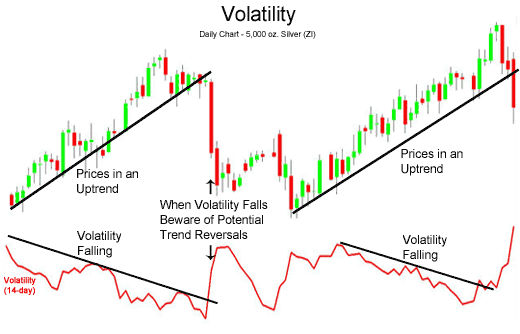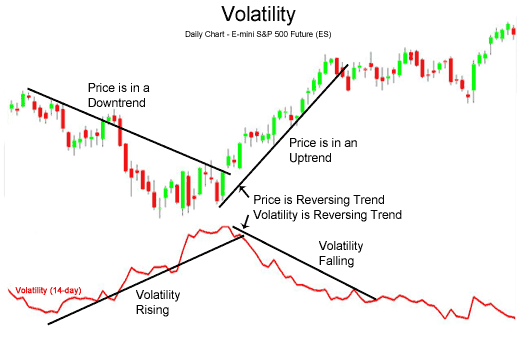The Volatility technical indicator is helpful in seeing potential market reversals. This Volatility indicator based on the true range of price is based on the premise:
- Strong trends upward are marked by decreases in volatility.
- Strong trends downward show a general increase in volatility.
- Reversals in trend usually occur when volatility increases.
The chart below of the 5,000 ounce Silver futures contract illustrates the first point, that strong trends usually have low volatility:

As the price in silver futures was increasing, the volatility was steadily decreasing. The change in trend was characterized by increased volatility.
Bottom ReversalsWhen prices bottom, they are usually accompanied by increased volatility. An increase in the Volatility indicator after a recent decline, could signal that the price is bottoming. Exiting or reducing the size of short positions might be a good strategy. Other indicators would be used to determine when to enter a long position.
The chart below of the S&P 500 Emini Futures contract shows an example of how bottoms are usually marked by increases in volatility:

Due to the general inverse relationship of volatility and price, the Volatility indicator can prove helpful in determing strong trends and potential price bottoms. Another similar tool is the VIX and VXN indexes that measure the implied volatility of CBOE index options
Volatility:
Volatility indicator displays the amount of the corridor price movements for N period in points
Fig.1 The Volatility indicator
Author: Nikolay Kositsin